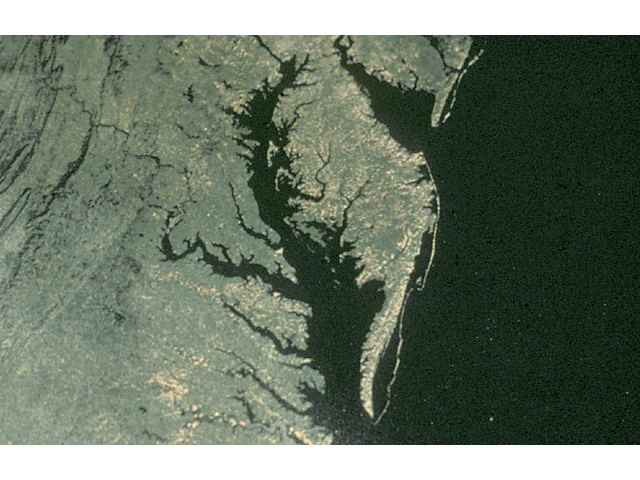EPA Settlement to Pressure Pa. Farmers
Chesapeake Bay Settlement Opens Door for EPA Enforcement on Pennsylvania Farms
LINCOLN, Neb. (DTN) -- Farmers in seven Pennsylvania counties can expect to see the EPA crack down harder on runoff pollution after a legal settlement was reached between the Chesapeake Bay Foundation and the EPA on Thursday.
The foundation sued the EPA in 2020 for a lack of progress on slowing nutrient runoff into the Chesapeake Bay, in particular, focused on what the lawsuit said was EPA's failure to hold accountable Pennsylvania and New York for not cutting nutrient runoff as part of the total maximum daily load, or TMDL, program for the bay.
Under the settlement to be filed in the U.S. District Court for the District of Columbia, EPA will set its sights on farms in Lancaster, York, Bedford, Cumberland, Centre, Franklin and Lebanon counties.
For agriculture in particular, the EPA will be looking at farms not currently required to have federal permits and that are in proximity to rivers and streams, to determine whether runoff from those farms is causing damage to water quality.
If EPA determines whether certain farms are significant contributors of pollution from runoff, the agency would then consult with the state of Pennsylvania about designating farms as point sources of pollution and subject to permits.
The attorneys general for Delaware, Maryland, the District of Columbia and Virginia filed a separate, similar lawsuit, and the courts combined the cases. The public now has 30 days to comment on the proposed settlement before it can be finalized.
Last December the state of New York resubmitted its TMDL plan to EPA and the agency accepted it, removing New York from the legal action.
"This proposed settlement is a win for local waterways, healthy communities and the Chesapeake Bay," CBF President Hilary Harp Falk said in a news release.
"EPA focusing on concerted remedial action to address some of the most severe problems in Pennsylvania provides accountability and reasonable assurance that bay restoration will succeed. This is a welcome change. The Trump administration did not use its Clean Water Act tools to hold all Bay partners accountable. By signing this agreement, the Biden administration has taken a significant step forward in meeting that obligation."
P[L1] D[0x0] M[300x250] OOP[F] ADUNIT[] T[]
In addition, EPA will be studying whether pollution runoff from stormwater in urban and suburban areas that currently are not subject to federal regulations is contributing nutrient runoff to rivers and streams.
That evaluation could lead to requiring permits for certain point sources of pollution.
In addition, in the settlement, EPA commits to expanding compliance and enforcement efforts.
That includes increasing compliance-assurance activities in the counties to assess whether federally permitted sources are complying with existing permit requirements.
EPA also will determine whether there are any general permits or individual permits within the Pennsylvania portion of the Chesapeake Bay watershed that have been administratively extended. EPA will work with Pennsylvania authorities to develop a permit reissuance strategy designed to bring permits up to date and reduce the number of administratively extended permits.
In 2010, EPA issued a TMDL for the Chesapeake Bay and its tributaries with jurisdictions in the District of Columbia, Delaware, Maryland, New York, Pennsylvania, Virginia and West Virginia.
The states adopted caps on discharges of nitrogen, phosphorous and sediment in the bay region.
EPA is tasked to oversee and evaluate progress by each jurisdiction and to act to ensure plans are implemented.
The Chesapeake Bay Foundation argued in its September 2020 lawsuit EPA's lack of action would lead to the continued degradation of the bay.
In 2014, EPA and the states signed an agreement that requires all practices to be in place to reduce pollution in the bay.
The Chesapeake Bay Foundation, however, said the states of New York and Pennsylvania have come up short and haven't been pressed by EPA. Both states submitted updated plans to EPA in 2019.
The CBF lawsuit said Pennsylvania is responsible for 46% of the nitrogen, 26% of the phosphorus and 31% of the sediment load into the Chesapeake Bay.
Even though EPA has imposed so-called backstop measures by transferring pollution loads from one sector to another, the lawsuit said those measures were "ineffectual," as Pennsylvania did not meet its obligation.
A separate lawsuit filed in Maryland, Virginia and Delaware, along with the District of Columbia, said EPA's approval of New York's and Pennsylvania's TMDL plans were "arbitrary and capricious."
The government plaintiffs said EPA approved Pennsylvania's plan in 2019, although it was proposed to "achieve only 64% of the nitrogen reduction targets prescribed for Pennsylvania by the bay TMDL, and 76% of the phosphorus reduction targets prescribed for Pennsylvania by the bay TMDL."
When New York submitted its plan in 2019, EPA found it would achieve just 61% of nitrogen-reduction targets.
Todd Neeley can be reached at todd.neeley@dtn.com
Follow him on Twitter @DTNeeley
(c) Copyright 2023 DTN, LLC. All rights reserved.




